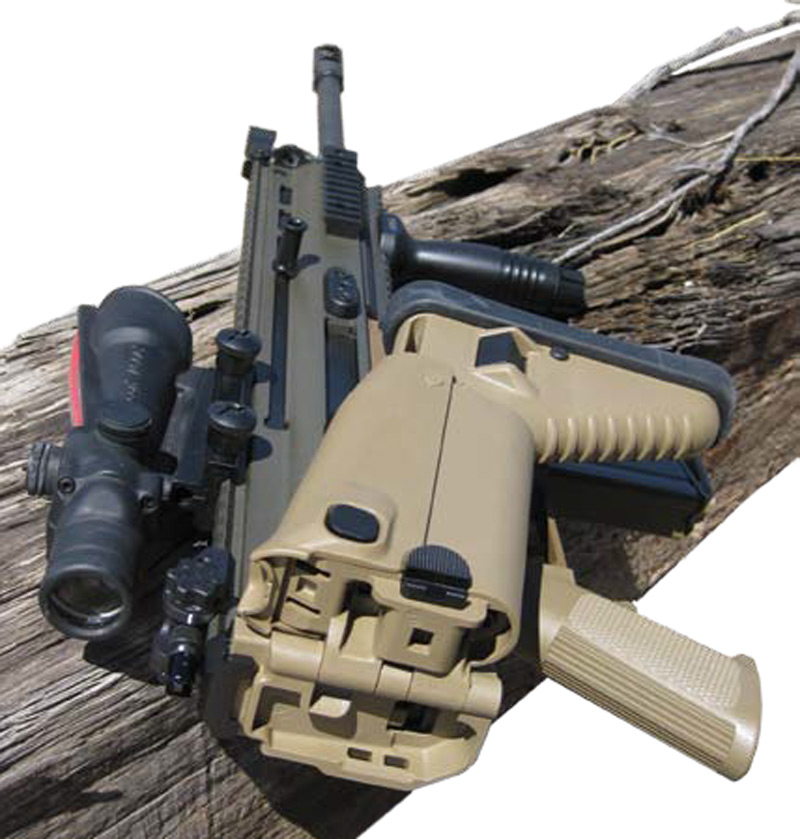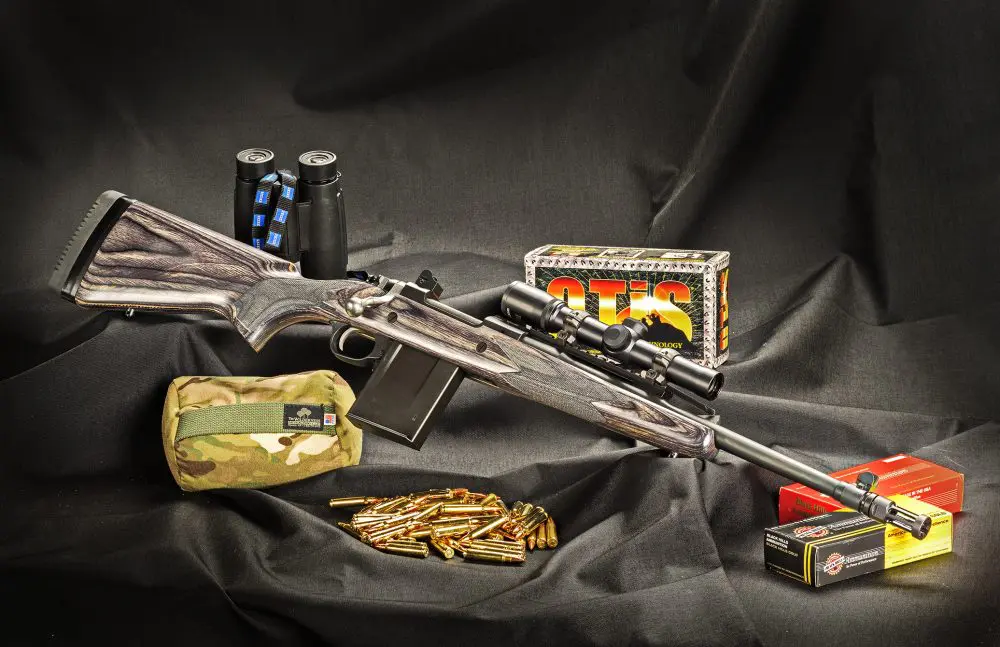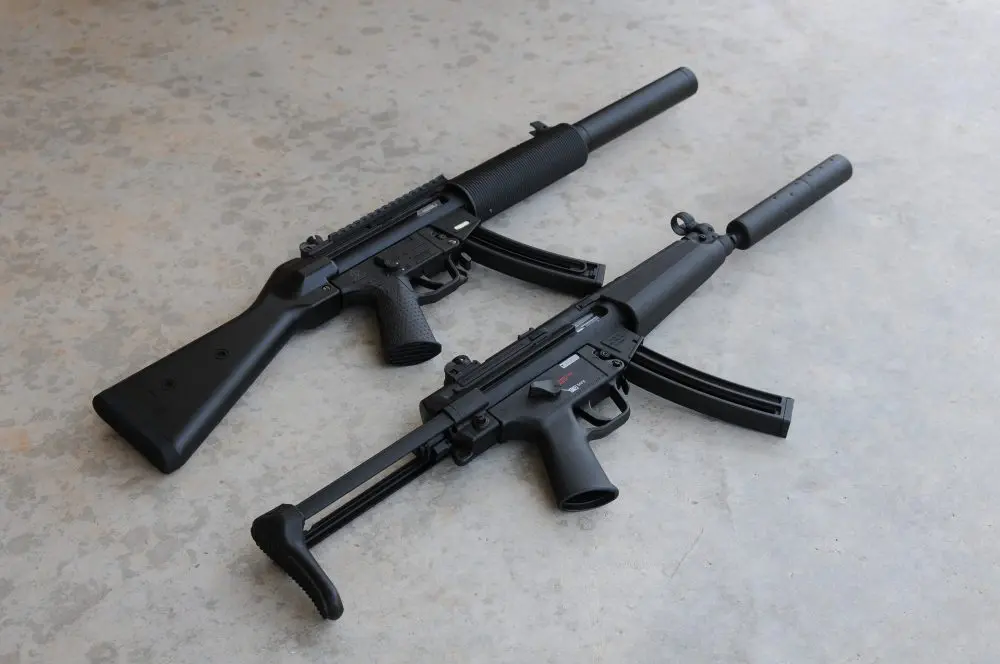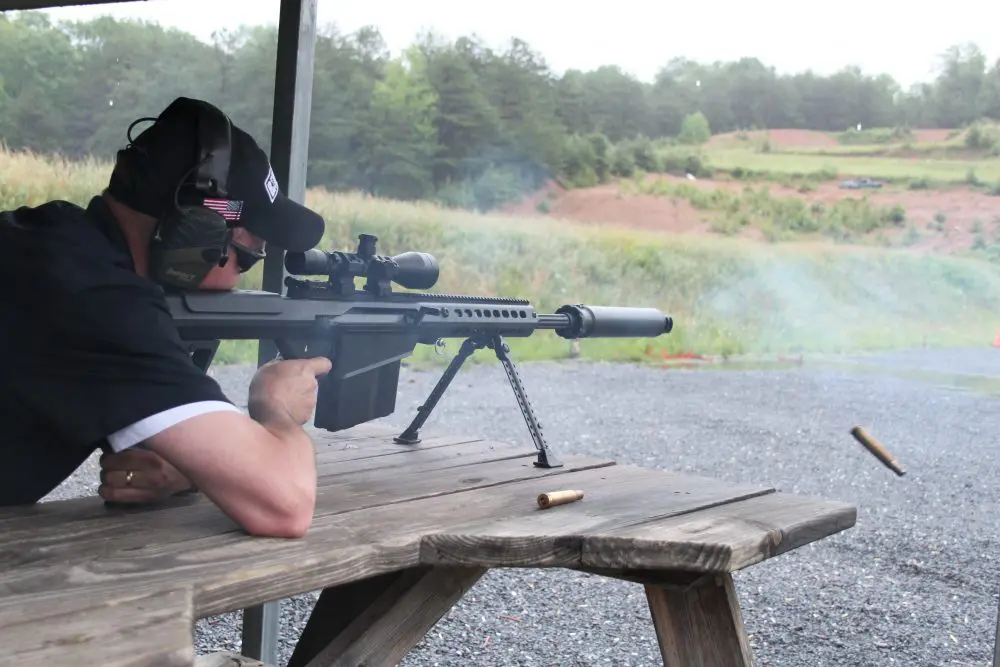

This rifle belonged to U.S. Customs and Border Protection’s (CBP) Office of Air & Marine (OAM), a unit I once served with during my career as a U.S. Customs Agent.
After firing the rifle, I made immediate plans to test and evaluate the semiautomatic version of the SCAR Heavy.
Table of Contents
THE SCAR PROGRAM
In 2003, the decision was made to develop two new Special Forces Combat Assault Rifles (SCAR) for the U.S. Special Operations Command, rifles that met the specifications set forth in a Joint Operational Requirements Document. The rifle that became known as the SCAR Light was to be chambered in 5.56x45mm, and the rifle that was to become known as the SCAR Heavy would be chambered in 7.62x51mm NATO caliber.
The most interesting and necessary feature on the SCAR Light and Heavy is that both rifles had to be manufactured with interchangeable barrels to enable USSOCOM operators to configure SCAR rifles for each mission that they participate in. This meant that the SCAR rifles could be made to conform to CQB tactical missions with a short 13-inch barrel, as a carbine with a 16-inch barrel, or as a designated marksman platform with a 20-inch barrel.
The semiautomatic version of the FN SCAR Heavy is currently available with a 16-inch barrel in Dark Earth or Black.

LET THE GAMES BEGIN
Even though I’ve never fired a SCAR Light, there’s no doubt in my mind that I would still prefer the FN SCAR Heavy. The reason I feel this way is because the FN SCAR Heavy is, next to the more dated Springfield Armory SOCOM 16, the most comfortable battle rifle chambered in the heavier 7.62x51mm NATO caliber that I have ever fired.
As a result, I see no reason to carry a 5.56mm caliber rifle when the 7.62mm NATO MK17 or MK17S is, for all intents and purposes, just as easy to lug around and as comfortable to shoot as any M16, M4 or FN SCAR Light. This is especially noticeable when you operate the FN SCAR Heavy MK17 in fullauto mode.
This is as good a time as any to engage in the age-old debate of whether it is better to carry twice the combat load of lighter 5.56mm ammunition or half that amount if you carry a rifle chambered in 7.62mm NATO. In this case, I’m sticking to my guns (no pun intended) and plan on going with the “heavier” caliber rifle for three reasons.


First and foremost is the issue of lethality, because it has been shown that 55-grain FMJ or even 62-grain 5.56mm caliber NATO-compliant ammunition does not produce the same fightstopping power that a 7.62mm caliber round of ammunition is capable of delivering at CQB to more extreme distances. To me, the only benefit of carrying twice the combat load of 5.56mm caliber ammunition is because you may need to fire more rounds per target to gain the required results in a combat situation.
The second reason has to do with the topic of suppression fire. Before the development of the FN SCAR Heavy, a traditional M4 carbine or any relatively lightweight 5.56mm caliber semiautomatic or select-fire rifle was the weapon of choice when you needed to lay down any type of sustained aimed fire or suppressing fire. This can be extremely critical when you are compelled by circumstances to defend a fixed position from being overrun. The good news is that even though the FN SCAR Heavy is chambered in the heavier 7.62mm caliber, either the semiautomatic MK17S or the selectfire MK17 can effectively be used to lay down aimed sustained rapid fire or suppressing fire because the MK17 and MK17S are both designed to be very controllable when fired quickly.
The third reason involves the issue of ammunition effectiveness at longer ranges. If you are compelled to engage a threat that is positioned beyond 300 yards, you can be at a tremendous disadvantage unless you’re armed with a full-size 5.56mm rifle that’s loaded with ammunition that is more effective than standard NATO-compliant ammunition. This is why some Special Forces troops began using longer barreled 5.56mm caliber rifles with 77-grain match ammunition.
Even though I have always been a huge fan of M16 and M4 carbine variants, the FN SCAR Heavy MK17 and MK17S are so impressive that you can’t help but say to yourself, “Why carry a 5.56mm rifle when I can easily carry a rifle in a more effective caliber?”
SHOOTING BUDDIES
In order to be thorough, I started my field test and evaluation by sighting in the semiautomatic FN SCAR Heavy MK17S with the help of two veteran shooting buddies of mine, Richard Batory and Larry Kotz.
In addition to having served as a detention department lieutenant in a sheriff’s department for 14 years, Richard Batory has also served as a contract firearms and tactics instructor for a local U.S. Air Force Special Operations unit.
Larry Kotz is a licensed SOT dealer who has provided Class III firearms for demonstration and familiarization purposes to law enforcement and military personnel.
As a result of their respective backgrounds, these gentlemen are extremely knowledgeable when it comes to the operation, use and maintenance of milspec firearms and various accessories, including optics.
ON THE RANGE
My colleagues and I started by making sure the MK17S was properly lubricated before any shots were fired. We then sighted in the SCAR Heavy using the folding iron sights it’s equipped with.
Even though I wish the rear peep sight were slightly larger, I had absolutely no problem finding the perfect shooting position for my comfort level, thanks to the well-designed adjustable stock. The FN SCAR Heavy MK17S came from the factory basically dead nuts accurate at 50 yards, which means I didn’t have to expend a ton of ammunition or more than a minute or so of my time to sight this rifle in with iron sights.
When we mounted the Trijicon ACOG TA11J that is specifically made for use on .308/7.62mm NATO caliber rifles, it only took a few minor adjustments to correct for windage and elevation. This enabled us to punch numerous holes in several two-inch circular Shoot ‘N’ See targets with the greatest of ease.
As much fun as it was to sight this rifle in, I enjoyed this day at the range even more when I went up to the 25-yard line and engaged a TQ19 Police Firearms Qualification Target with the semiautomatic SCAR Heavy. I performed readyup and rapid-fire drills that resulted in very respectable groups on the mansize target.
I also did some long-range shooting with the rifle and delivered a 1.5-inch group at 100 yards from a sitting position while using a Blackhawk Messenger Bag as a rifle rest. I was also able to hit a steel plate at 400 yards, while my shooting buddy Rick Batory successfully engaged a steel plate at 500 yards using the Trijicon ACOG TA11J optic.

CONCERNS
The rifles proved to be very reliable. The government-issued select-fire FN SCAR Heavy MK17 that I recently tested, however, experienced a single stoppage after firing approximately 300 rounds.
The federal agent who carries this issued Air Crew Rifle stated that he believed his MK17 experienced the single stoppage during the break-in period because it was not properly lubricated. Either way, the select-fire MK17 has reportedly been flawlessly reliable since that first session and has fired well over 1,200 rounds since then.
The only concern I have with the select-fire and semiautomatic SCAR Heavy is that I’m very conscious of the reciprocating bolt. Even though this distraction does not negatively affect my ability to deliver accurate shot placement, I tend to keep looking at my nonshooting hand to make sure my hand is nowhere near the line of travel of the reciprocating bolt.
One solution is to install a forward vertical grip on the MK17 and MK17S and constantly train to use this accessory with this rifle design. The other solution is to move the reciprocating bolt to the right side of the receiver, since I am a right-handed shooter.
This makes a great deal of sense for me, because I also own and train with various rifles that have their operating bolt located on the right side of the receiver, including a Yugoslavian AK- 47, Bulgarian AK-74, Golani Galil, and Springfield Armory M1A1 and SOCOM 16.

CLOSING REMARKS
The semiautomatic FN SCAR Heavy is just as well made as the select-fire version because the MK17S is manufactured with a free-floating, coldhammer- forged milspec hard-chromed barrel, anodized aluminum receiver, lightweight molded polymer construction, fully adjustable six-position telescoping and side-folding polymer stock with cheek adjustments, ambidextrous operating controls, and an integrated military-standard M1913 accessory rail with additional rails at the 3, 6 and 9 o’clock positions.
My biggest complaint with the Dark Earth SCAR Heavy test rifle, which I ended up purchasing from FN along with nine spare 20-round magazines, is the design of the sling mounts. While I would prefer the MK17S did not have a reciprocating bolt, I do like having the capability of relocating the bolt to the other side of the receiver.
If you wish to carry a battle rifle that is virtually identical to the milspec rifle currently being issued to USSOCOM personnel, you should strongly consider buying an FN SCAR Heavy MK17S.
As much as I like my SOCOM 16, Springfield Armory M1A1 and LWRCI REPR, I find the FN SCAR Heavy MK17S to be the Top Gun of all 7.62mm NATO caliber battle rifles.





